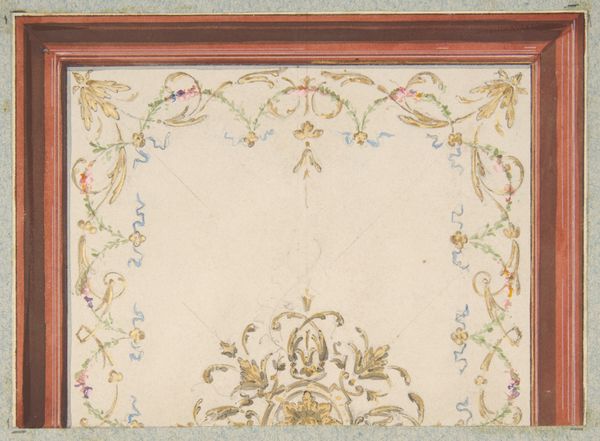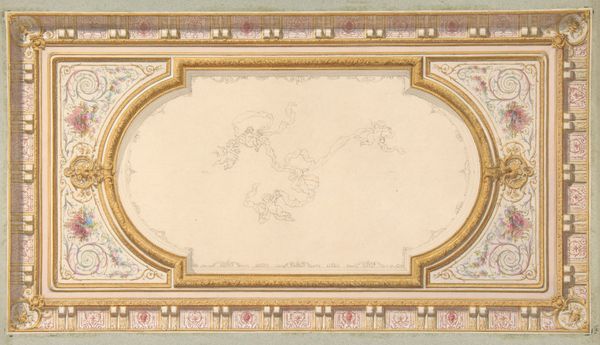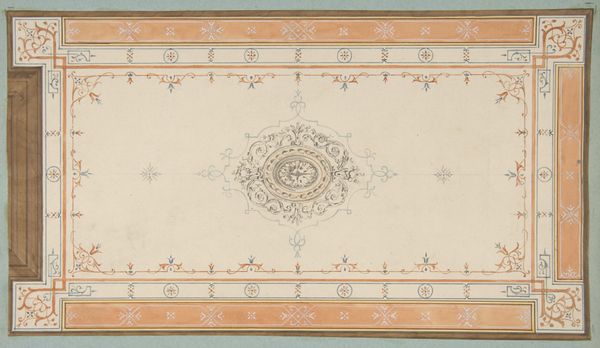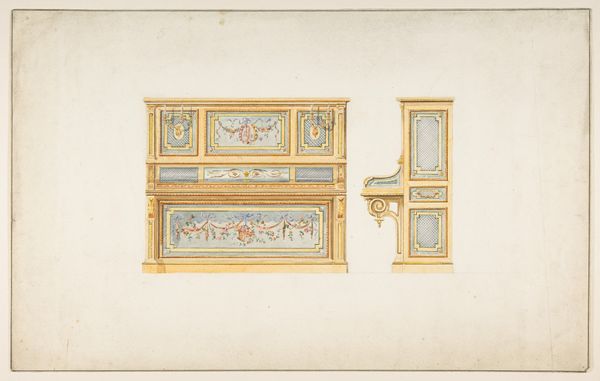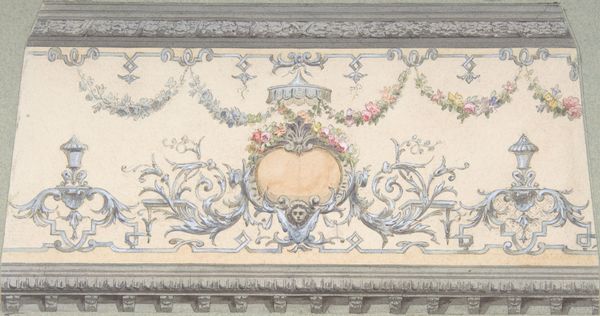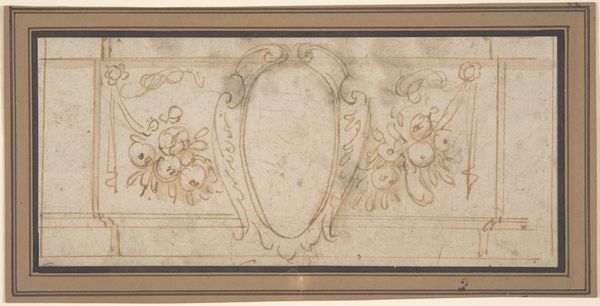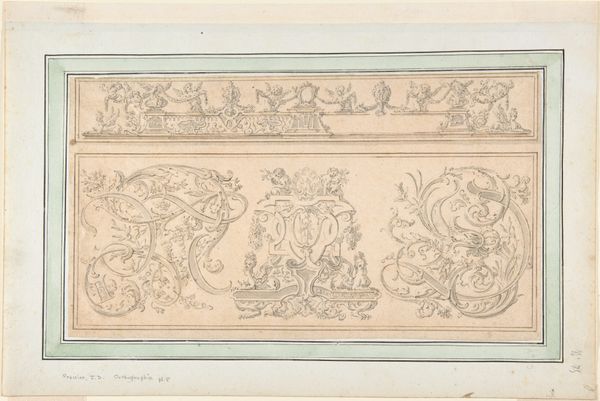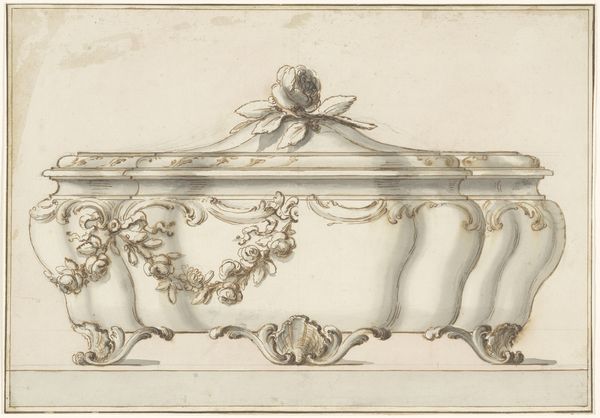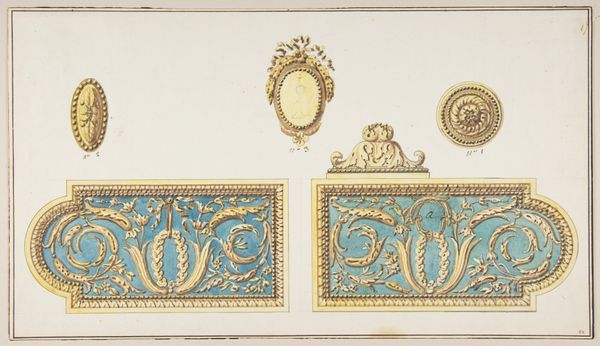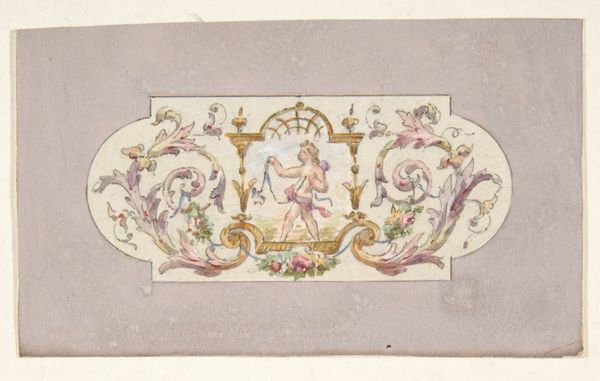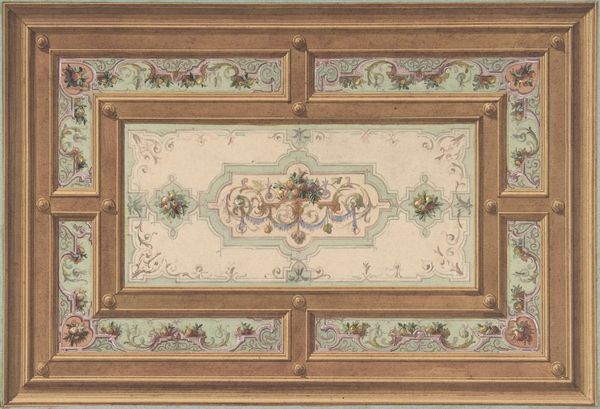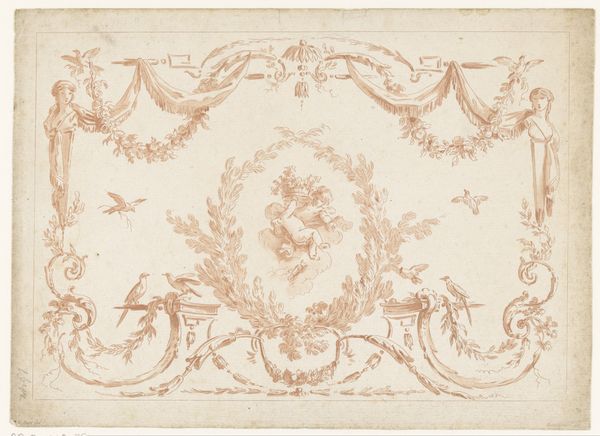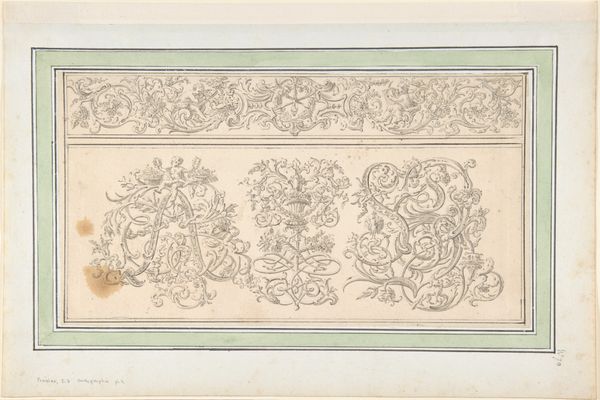
Design for a ceiling with two putti and symbols for the arts 1850 - 1900
0:00
0:00
Dimensions: Overall: 8 3/4 x 10 5/8 in. (22.2 x 27 cm)
Copyright: Public Domain
Curator: Take a moment to gaze upwards at "Design for a ceiling with two putti and symbols for the arts," a watercolor drawing from between 1850 and 1900 by Jules-Edmond-Charles Lachaise, now residing at The Met. The pastel hues give the artwork a peaceful feeling. What stands out to you most when you look at it? Editor: The precision of the draftsmanship juxtaposed with the fluidity of the watercolor. I can almost smell the pigment drying on the page, feel the grain of the paper under the artist's hand. Curator: Precisely! Lachaise’s technique highlights the interplay between line and wash, and in the lower frieze, we have carefully rendered putti framed by meticulously detailed scrolling ornaments and classical motifs. Notice the balanced symmetry and classical composition! Editor: That's all well and good but how did he transfer that idea onto a vaulted ceiling, transforming the delicate lines into something larger? What kind of artisans collaborated on this, and how much did it cost? These things matter more than just observing “symmetry.” Curator: The design embodies neoclassical ideals: harmony, order, and a celebration of artistic and intellectual pursuits. Consider the allegorical representations: palettes, musical instruments, and books interwoven into the composition, signifying different artistic disciplines. They form a vocabulary understandable in many contexts. Editor: And, like you, those elite contexts often erase the unseen labour involved: the production of paints, the preparation of surfaces. Without considering that labour, it becomes yet another example of 19th century overconsumption. What looks delicate is embedded in global supply chains. Curator: Well, looking closer at the composition of these putti, observe the dynamism infused by their gestures and interaction with symbols, injecting vitality within a classical framework. The composition has undeniable rhythm and balance. Editor: Yes, but let's consider where those materials originated! Lachaise probably didn’t prepare his own watercolors or refine his own paper. Who produced these things, and what were their working conditions? What about the structures that enabled the work itself? These are the truly interesting structural considerations! Curator: While you focus on the macro-level processes, the design's delicate balance offers a compelling glimpse into how classical elements adapted and endured throughout the nineteenth century in service of a well composed picture. Editor: And from that balance emerges new considerations. With this artwork, Lachaise not only encapsulates a moment in art history, but also leaves space to ask questions about our relationship to resources.
Comments
No comments
Be the first to comment and join the conversation on the ultimate creative platform.
